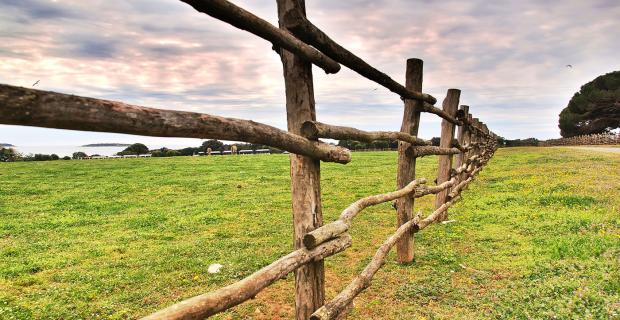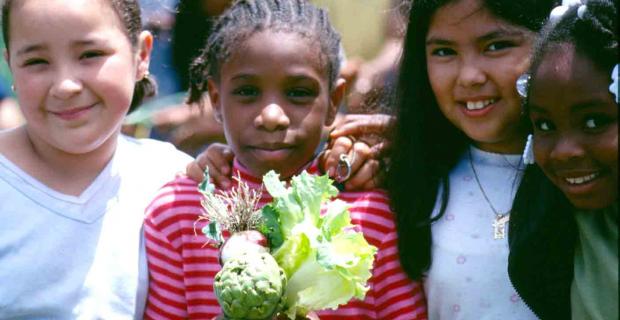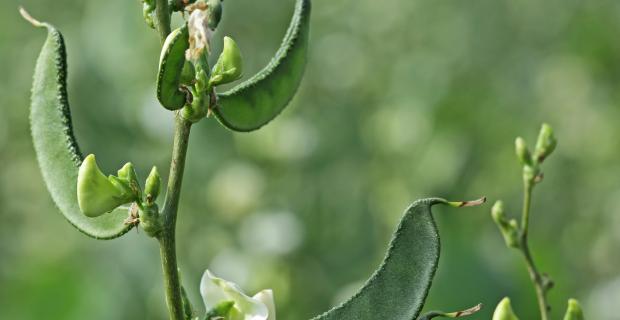Climate-Smart Ranching: An Interview with Kat Taylor and Wendy Millet

Kat Taylor is founder/owner TomKat Ranch, an 1,800-acre cattle ranch and educational facility in Pescadero, California, about 50 miles south of San Francisco. Wendy Millet is director of TomKat Ranch Educational Foundation. They presented their approach to climate-smart ranching at a Center for Ecoliteracy dialogue on food systems, climate change, and ecological education.

TomKat Ranch
Center for Ecoliteracy: Tell us about TomKat Ranch.
Wendy Millet: Our mission is to provide healthy food on working lands in a way that sustains the planet and inspires others to action. We focus on four initiatives: Climate-smart Ranching, Sustainable Landscapes, Raising the Steaks, and Learning Landscapes. LeftCoast GrassFed® is our grass-fed, grass-finished beef business. The ranch is also the site for several other projects. We lease land to Early Bird Ranch, a pasture-raised poultry and pork operation owned by a young farmer couple. Our horses work the cows, but it’s fun for them to have a job as they age so we employ them through Gallop Ventures, a leadership and teamwork program.
We see ourselves as a model that educates and inspires students, consumers, and land managers. Through our Learning Landscapes initiative, we offer everything from training and education programs for students to workshops and gatherings for scientists, land managers, and mission-related organizations.

Wendy Millet (left) and Kat Taylor
Kat Taylor: We’re also a huge experiment to investigate the environmental and economic benefits of sustainable animal agriculture. We’re committed to trying a variety of techniques, using solid science to test the results, and widely broadcasting our findings. Point Blue Conservation Science, our science partners, are on the ranch full-time, conducting ecosystem studies to measure the effects of our practices.
The economic benefits part is really important. We're striving to identify farming practices that are profitable as well as environmentally sound and good for communities. We run internship programs to introduce farming and ranching opportunities to new populations and promote farmworker-to-farm owner strategies. We seek innovative solutions for business bottlenecks, certification systems, and market connections for ranchers and consumers.

CEL: You describe the ranch as "climate-smart." What do you say to people who point to animal agriculture, especially beef, as a primary contributor to climate change?
WM: Many in the conservation environmental movement — and I spent a dozen years at the Nature Conservancy — tend to think that cows are the problem. But the problem is the management of the cows, not the cows.
The huge issue facing us is how to take carbon out of the atmosphere and bring it to a place where it can be held. It can’t go into the oceans, because the oceans are acidifying. It can go into the soil. Carbon storage in plants and soil may offer the best option for removing greenhouse gases. Through photosynthesis, plants take carbon dioxide from the air and use it to create sugars. They create a root exchange that feeds other plants and organisms and serves as a place where carbon can be held for a very long time. That’s a very short answer, but the scientific evidence for soil’s potential to sequester carbon is growing.
Grasslands, which make up 40 percent of the Earth’s surface, often in terrain that won’t support other kinds of agriculture, present a great opportunity for carbon sequestration, but grasslands have been highly altered after decades of agricultural practices that have depleted the soil, increased erosion, and interfered with the ability to bind carbon.
CEL: And livestock can reverse that process?
WM: Grass and grazers are interdependent. Grasslands evolved with large herbivores — large herds of buffalo, antelope, even sloths and llamas and other species going back to the Pleistocene, which were kept moving by predators. If they don't stay too long in one place, herbivores stimulate plant growth as they eat, beat down the grass, and defecate. The typical practice in conventional ranching, though, is to throw the cows out in the pasture and pick them up at the end of the year when it’s time to take them to the slaughterhouse. By then they’ve seriously overgrazed, and the landscape and soil are no longer healthy.
We break the ranch into many smaller pastures and mimic natural herd behavior by constantly moving the cows from pasture to pasture. These days, we don't have many predators, so humans with the help of solar-powered electric fencing can move the animals around. And we're also paying attention to which pastures include bird-breeding habitat, which are near streams when the salmon are running, and so on. The key thing is putting the right number of animals in the right place at the right time and for the right reasons.

KT: Some of the theory behind this practice, by Allan Savory and others, is controversial. We accept that pursuing a new agenda, and in a way that the world can hear, is a very high responsibility. We don't want to over-claim. That's one of the reasons we're so committed to scientifically documenting our results. And we are showing results. Perennial grasses stabilize soil, increase fertility, retain water, and sequester carbon much better than annuals. Using planned grazing techniques, we went in just three years from perennial grasses in six of our pastures to perennials in fifty-eight pastures.
Of course, climate-smart ranching is more than just planned grazing. We're installing solar to power our buildings, using horses and electric vehicles, and minimizing driving and tractor use. We're engaged in a water budget assessment and using scenario planning to determine how to manage under a range of likely climate futures. We're investing in local food, and managing and promoting biodiversity.
WM: Meanwhile, Symbi Biological, our R & D facility, is working on hydroponics, vermiculture, barley fodder, spirulina, crickets as protein sources, soldier flies, new compost techniques, something new every day.
CEL: If these practices work, how to make the shift on a large enough scale to make a difference? Most managed land today is being managed in a totally different way, and many ranchers don't have your financial resources.
KT: We recognize that we have some unique advantages. We have financial resources that allow us to take risks and experiment. We have an ideal location close to consumers and producers. We’re connected with a broad network of collaborators and thought partners, including Point Blue; the Center for Ecoliteracy; Soil Carbon Challenge; other educational farms and ranches; the local land trust, school district, and National Resources Conservation Service/Resource Conservation District offices; and numerous organizations and universities working on food, ecology, and agriculture issues. We believe that with such advantages comes a responsibility to share lessons learned and facilitate the empowerment of others in creating sustainable landscapes.
We take our assets, and talk to both ends of the supply chain — producers and consumers — and everyone in between. We have a lot of partners, and ideas like the TIMM Assessment (Total Impact Measurement and Monitoring), which we're pursuing with PricewaterhouseCoopers. We're doing a full life cycle analysis of our current practices versus the counterfactual, the industrial system.
WM: There's not a lot of science out there that has matched our findings, because most ranchers don't do science. And the scientific community says, “This is impossible.” That's probably because they weren't actually on a cattle ranch, doing the management we are and then tracking it over time. But Point Blue's doing that at our ranch and publishing results. It’s an exciting time for conservation and ranching to come together.

TomKat Ranch hosts educational tours, trainings, and workshops.
CEL: What about consumers?
KT: We need to shift demand towards environmentally healthy food produced in a just and resilient manner. There's the MUSHP strategy: Municipalities, Universities, Schools, Hospitals, and Prisons. We started in the Pescadero school district with 400 kids. With the Center for Ecoliteracy, we’ve set our sights much higher in Oakland and statewide through the California Thursdays program. We started with schools because we had such a great partner in CEL, but we should move on to these other large sources of demand.
We believe that we can lower the costs of producing environmentally healthy food. The scale of the industrial system provides a lot of efficiencies that we lack. But we can help level the playing field by removing obstacles and improving the processing and distribution system. We want to make sure that if consumers pay a premium at all, it's for positive externalities — increased ecological system services like water retention and quality soil, carbon sequestration, biodiversity, and good health — and not for inefficiencies.
And finally, we need to increase access to healthy, affordable food for underserved communities. This is probably most near and dear to our hearts. There are too many food deserts in America, too much starvation and malnourishment or bad food leading to early childhood obesity. That's a scandal in a nation as wealthy and knowledgeable as ours.
Photos and diagram courtesy of Tomkat Educational Foundation




